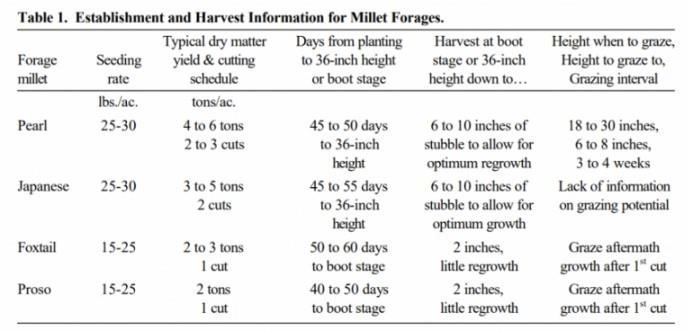If the weather does not cooperate and allow for forages to be seeded this spring, one option to consider if you are in need of a forage this season is planting a warm-season annual (i.e. sorghum, sorghum sudangrass, millets, etc.). Ideally, for warm-season annuals, soil temperatures should consistently be 60°F or warmer. Therefore, it is recommend waiting to seed warm season annual forages until at least the first of June. Seed for warm season annuals may be in short supply this year, so check with your seed supplier on availability.
If you decide to switch and plant a warm season annual instead keep in mind some species are better suited for grazing rather than baling. If you want to put up the forage as dry hay, foxtail millet and Japanese millet are likely your best options.

We can utilize these warm season annuals over the summer as forage, and then potentially try and seed the original intended forage later this summer or wait until next spring. If you wait to seed until next spring, remember seed is perishable. Make sure to store seed in a cool and dry place. It is also recommended to do a germination test on carryover seed before planting in case seeding rates need to be adjusted due to a reduce germination on the seed.
Source : iastate.edu